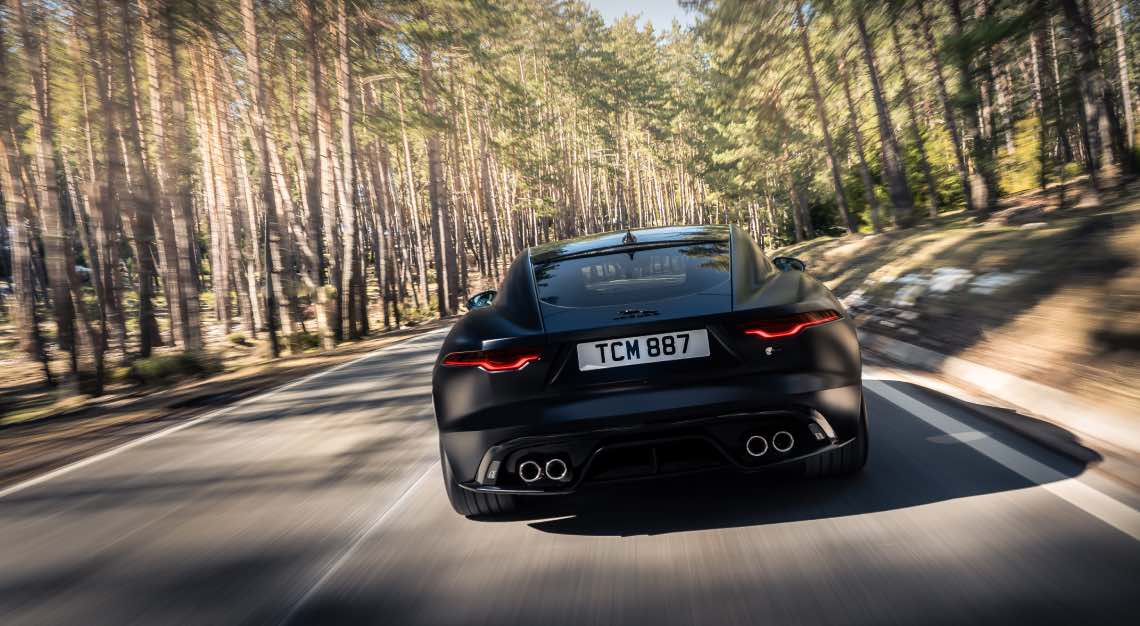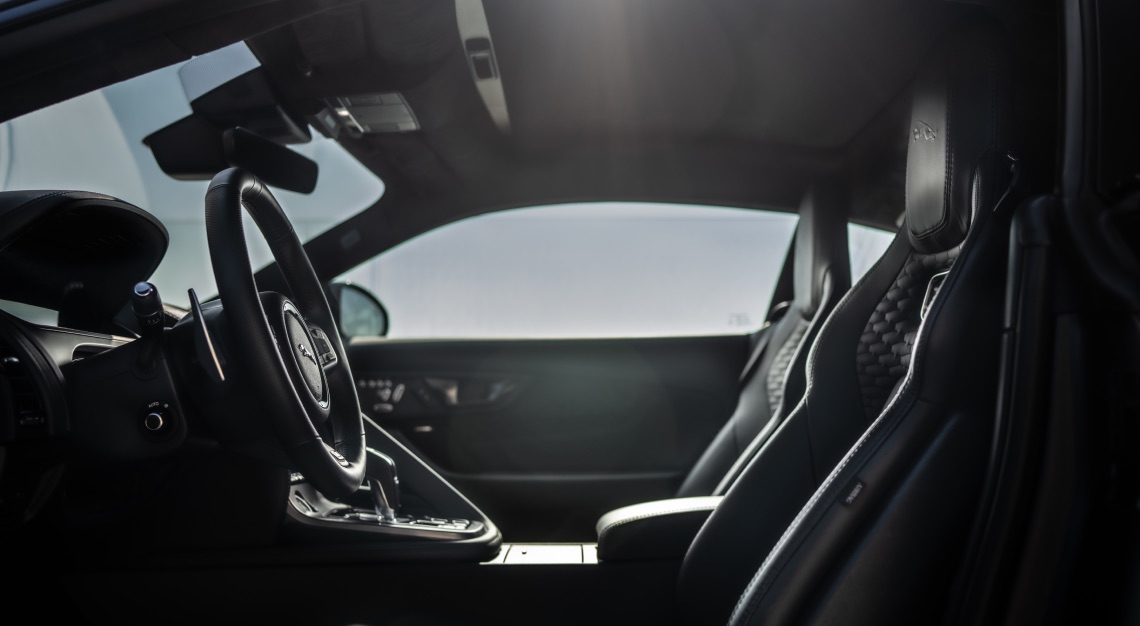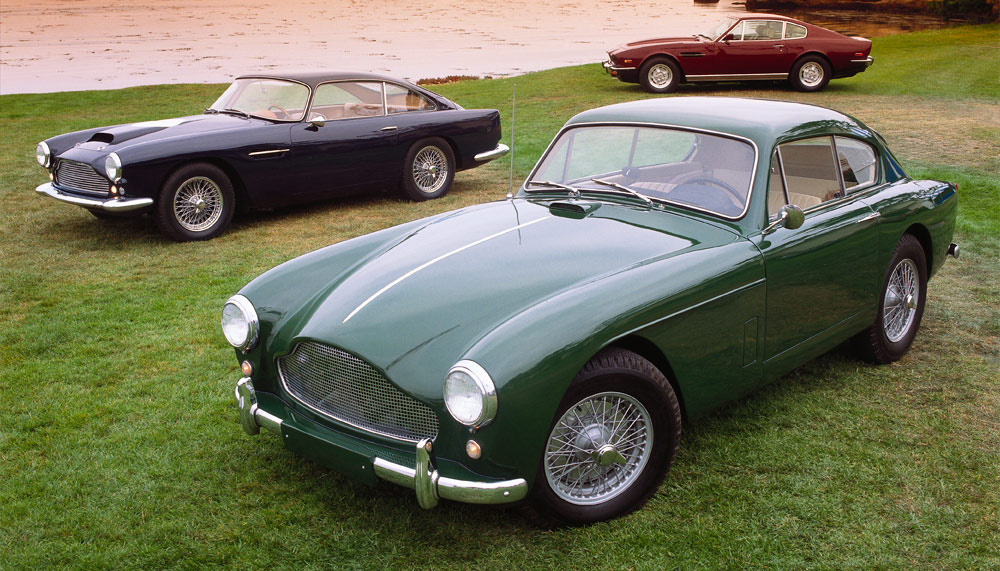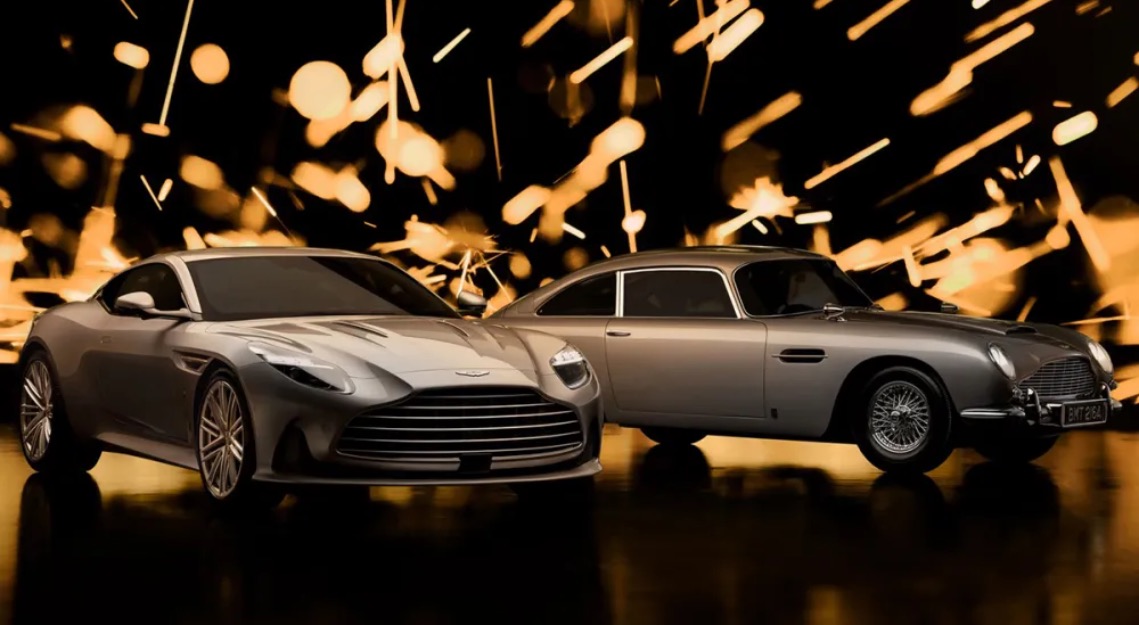Writer Robin Swithinbank motors through Spain in the marque’s final internal-combustion-engined sports car, the Jaguar F-Type R75 Coupe
I suppose this is it. The beginning of the end. No, not even that. The end of the end. Before me, poised like a scorpion on a hot rock and looking slick in Ligurian satin black, is Jaguar’s F-Type R75 Coupe, a 567 hp, five-litre clenched fist of supercharged V-8. It looks fantastic. Like it would pick a fight in a nunnery. It’s also the last sports car fit solely with an internal-combustion engine that the British marque will ever make, 75 years after its first, the peerless XK120. Strange and heavy words to write.
We’ve known for years that the automotive sector would be sending gas-guzzling cars the way of cigarettes and sunbeds, but even so, Jaguar’s clean-sheet strategy feels all too soon. Its electrified fleet is due in 2025, along with a total brand reboot about which we know next to nothing, save that average on-the-road prices are set to enter six-figure territory. Jaguar’s sales have been sluggish for years, and the automaker has decided that the only way to dig itself out is through lithium mines.

Yet if that’s a bleak backdrop, the view before me is more cheerful. Ahead lies almost 500 miles of Spanish tarmac, the road to the beaches of San Sebastián, and a car begging to be remembered. Picking up the F-Type R75 at the Barcelona airport, I know that, in a straight line, I could make it to the northern coast in six hours. But instead, Jaguar has plotted a two-day route that, on a map, looks like it was drawn by someone asked to hold a pen for the first time.
North toward the Pyrenees I’ll go, through towering gorges and up precipitous mountain passes, stopping to refill the reserves with gasoline and espresso. Not that I’ll need the fuel injection. From the moment the R75 fires up its oversexed V-8, it gurgles with latent aggression, sending a surge of excitement through my soul and into my, well, general thigh area.
Out on the road, Gaudí’s city a pinprick in the rearview mirror, it’s not the speed you notice, even though the R75 will hit 97 km/hr from a standing start in 3.5 seconds. Not like you do in an electric car, where all there is to notice is the speed and the wind. Switching into manual and pumping the paddle shifters, I hear the car crackle and pop, raging like a bear that missed out on supper. The rev flare—as you push up to 6,000 rpm, then 7,000 rpm, and then flick it from second gear into third—is just glorious. It might be lazy to say so, but I can’t recall feeling this alive in a car that runs on batteries.

Normally, one would suspect that lunch at the rustic riverside restaurant Les Nous, in the unassuming mountain town of Rialp, would be an enjoyably lengthy affair, but there’s a mountain to climb, up past 2,040 metres to the Port de la Bonaigua pass, where on a balmy spring day a few mournful skiers are eking out the last of the snow. The roads are dry, dusted with a milky layer of salt, and the all-wheel-drive R75 proves obliging, more than once bringing itself back into line for me as hairpin follows hairpin.
If the views are lovely, so too is the car’s interior. A panoramic roof and deep seats wrapped in soft black leather almost make it feel like a grand tourer, even for drivers of advanced height. Rolling into Hotel Viñas de Lárrede, in a tiny hamlet north of Huesca, after seven hours at the wheel, I feel like my eyes are still on stalks, despite having been up since 4 a.m. Fun trumps fatigue.
Day two takes us over the Coronas pass and up a roughly three-mile stretch of winding road that was either designed by a 12-year-old on an Xbox or created expressly for the R75. This being remote northern Spain, the paved arteries are as empty as the sky, and with the sun casting shadows through the pines, it’s time to send the sound of that V-8 ricocheting off the looming rocks. At the summit, grin on full beam, there’s just one thing to do: Turn around and do it all again.
The route north toward the Cantabrian Sea, the body of water that gives way to the Bay of Biscay and then the Atlantic, takes us from the coast to Pamplona, where the Jaguar draws waves from young boys more familiar with running bulls. As journey’s end approaches, lachrymose thoughts return. This kind of snarling, vicious hooligan of a machine will soon depart the world, a final chapter in motoring’s Old Testament. The electric covenant is nigh, and perhaps the Earth’s salvation is at hand. But forgive me if I wish it weren’t. Because it makes Jaguar’s F-Type R75 Coupe the saddest fun car I’ve ever driven.
This story was first published on Robb Report USA






